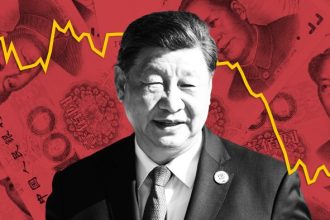Oil futures settle at their highest in two weeks on Wednesday, finding support after Saudi Arabia’s energy minister reportedly said that the kingdom and its allies will do whatever is necessary to support the oil market.
The comments from Saudi Energy Minister Prince Abdulaziz bin Salman at an OPEC+ seminar was reported by a number of news agencies and follows the Saudi’s announcement Monday that it would extend its voluntary production cut by another month, through August.
Tensions in the Middle East, following news of an attempt by Iran to seize two oil tankers at the Strait of Hormuz, also provided support to oil prices.
Price action
-
West Texas Intermediate crude for August delivery
CL00,
+2.14% CL.1,
+2.14% CLQ23,
+2.14% ,
the U.S. benchmark, climbed $2, or 2.9%, to settle at $71.79 a barrel on the New York Mercantile Exchange. WTI futures didn’t settle Tuesday due to the holiday. -
September Brent crude
BRN00,
+1.89% BRNU23,
+1.89% ,
the global benchmark, added 40 cents, or 0.5%, at $76.65 a barrel on ICE Futures Europe. Brent and WTI marked their highest front-month settlements since June 21, according to Dow Jones Market Data -
Back on Nymex, August gasoline
RBQ23,
+1.66%
rose 2.3% to $2.5183 a gallon, while August heating oil
HOQ23,
+2.95%
added 4.9% to $2.4933 a gallon. -
August natural gas
NGQ23,
-1.72%
lost 1.9% at $2.657 per million British thermal units.
Market drivers
The Saudis said that they and their allies were going do whatever it takes to support oil prices “and the fact that we got a commitment from Russia to do a voluntary additional 500,000 barrel a day production cut gave the market initial bounce” on Wednesday, Phil Flynn, senior market analyst at The Price Futures Group, told MarketWatch.
At the Organization of the Petroleum Exporting Countries’ international seminar, which ends on Wednesday, Prince Abdulaziz said OPEC+, which is made up of OPEC and its allies, will do “whatever necessary” to support the oil market, Reuters reported Wednesday.
Saudi Arabia had announced Monday it would extend a July production cut of 1 million barrels a day through August, while Russia said it would cut exports by 500,000 barrels a day.
The “‘whatever it takes’ mentality and display of unity by OPEC+ can help support oil prices in the near term” and the $70-a-barrel mark is looking to offer initial support again,” Tyler Richey, co-editor at Sevens Report Research, told MarketWatch.
However, such gains are “unlikely sustainable given the increasing threat of recession” in the second half of this year, which would “almost certainly cripple consumer demand and send WTI below 2023 support at $67,” he said.
Drama in the Strait of Hormuz, meanwhile, “reminded us that it’s probably not a very good idea” that the U.S. has tapped into its Strategic Petroleum Reserve — so it has less emergency supplies “if there’s actually a real emergency,” Flynn said.
Iran attempted to seize two oil tankers near the Strait of Hormuz and fired shots at one of them, CBS News reported, citing a U.S. Navy spokesman. In both cases, the Iranian naval vessels backed away after the U.S. Navy responded. The Energy Information Administration refers to the Strait of Hormuz, located between Oman and Iran, as the world’s “most important oil transit chokepoint.”
The drama in the Strait of Hormuz adds to concerns that in the second-half of the year, if we don’t get a recession, “supplies are going to be very tight,” said Flynn.
Weekly petroleum supplies data from the EIA will be released Thursday morning, a day later than usual due to Tuesday’s Fourth of July holiday, while the EIA’s weekly natural-gas supply report will come out Friday.
Read the full article here





